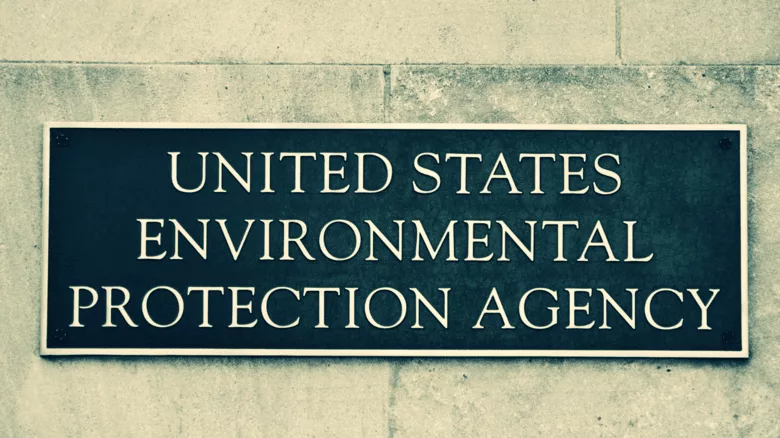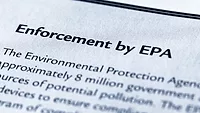Score of Actions Listed Under EPA’s New PFAS Initiative
Actions include EPA designating itself as the lead agency to address PFAS

Image via nojustice from Getty Images Signature
Within three weeks of a top Environmental Protection Agency (EPA) water policy official saying the EPA is reviewing its per- and polyfluoroalkyl substances (PFAS) regulation issued in April 2024, the head of the EPA announced “a suite of actions” to address PFAS, including designating the EPA as the lead agency to deal with PFAS.
On April 28, 2024, EPA Administrator Lee Zeldin outlined upcoming agency actions to address PFAS that—in addition to designating EPA as the lead PFAS agency—would establish an effluent limitations guidelines (ELGs) for certain PFAS chemicals to aid in stopping those substances from entering drinking water systems; and to pursue initiatives to engage with Congress and industry to establish a clear liability framework that ensures polluters are held financially responsible while protecting passive receivers of PFAS.
The new initiative will enable EPA to tackle “PFAS from all of EPA’s program offices, advancing research and testing, stopping PFAS from getting into drinking water systems, holding polluters accountable, and providing certainty for passive receivers,” said Zeldin who added the initiative will strengthen PFAS-related science; fulfill statutory obligations; enhance communication; and build partnerships.
The initiative was made public three weeks after Jennifer McLain, director of the EPA’s Office of Ground Water and Drinking Water, told The Driller the agency is reviewing its PFAS regulation issued in April 2024.
McLain, who spoke at the Metropolitan Water Agencies policy conference in Washington, D.C. on April 7, 2025, said as part of the EPA’s overall effort concerning review of the PFAS regulation, the agency is in “an open dialog” with water sector officials to consider options in support of “setting systems up for success.”
The review of the PFAS regulation is “right in line” with the work EPA is doing every day and reflects the number of “challenges, particularly with our water infrastructure,” said McLain.
In addition, Zeldin said the new initiative provides EPA with “the foundation and investment necessary for a toolbox that will help states and communities dealing with PFAS contamination.”
To ensure PFAS and other drinking water issues are adequately addressed, EPA investments in drinking water and in the water sector remains a “high priority,” said McLain, who added EPA will continue to implement the Drinking Water State Revolving Fund to ensure there is “a sustainable future of funding for infrastructure.”
Furthermore, the “most recent needs survey showed that there is over $625 billion in infrastructure needs over the country over the next 20 years,” McLain said. Those infrastructure needs have resulted in federal investment of $34.6 billion being turned into $63 billion in loans to communities to fund projects across the U.S., according to McLain, who added an announcement on funding for water project in 2025 “will be coming out in the next in the coming weeks” in which EPA will work with “state partners to get those dollars out on the ground and working.”
Through the new initiative, the EPA will have “the foundation and investment necessary for a toolbox that will help states and communities dealing with PFAS contamination,” said Zeldin, who listed the systems and actions “to help communities impacted by PFAS contamination.”
In addition to designating the EPA as the lead agency to manage PFAS efforts across agency programs, the areas designated by EPA that those systems and actions fall under, as well as some details of each are:
Strengthening the Science
- Implementation of a PFAS testing strategy under the Toxic Substances Control Act (TSCA) to collect scientific data through “hazard characteristics” and “exposure pathways”.
-
Launch additional efforts on air related PFAS information collection and measurement techniques related to air emissions.
-
Identify and address available information gaps where not all PFAS can be measured and controlled.
- Provide more frequent updates to the PFAS Destruction and Disposal Guidance by issuing the guidance annually rather that every three years as EPA continues to assess the effectiveness of available treatment technologies.
- Ramp up the development of testing methods to improve detection and strategies to address PFAS.
Fulfilling Statutory Obligations and Enhancing Communication
- Develop ELGs for PFAS manufacturers and metal finishers and evaluate other ELGs necessary for reduction of PFAS discharges.
- Address the most significant compliance challenges and requests from Congress and drinking water systems related to national primary drinking water regulations for certain PFAS.
- Determine how to better use Resource Conservation and Recovery Act authorities to address releases from manufacturing operations of both producers and users of PFAS.
- Add PFAS to the Toxic Release Inventory in line with Congressional direction from the 2020 National Defense Authorization Act.
- Enforce Clean Water Act and TSCA limitations on PFAS use and release to prevent further contamination.
- Use Safe Drinking Water Act authority to investigate and address immediate endangerment.
- Achieve more effective outcomes by prioritizing risk-based review of new and existing PFAS chemicals.
- Implement section 8(a)7 of the TSCA to collect needed information without overburdening small businesses and article importers.
- Work with Congress and industry to establish a clear liability framework that operates on polluters paying for PFAS contamination while protecting passive receivers.
Building Partnerships
- Advance remediation and cleanup efforts where drinking water supplies are impacted by PFAS contamination.
- Work with states to assess risks from PFAS contamination and the development of analytical and risk assessment tools.
- Finish public comment period for biosolids risk assessment and determine which paths forward should be pursued based on comments.
- Provide assistance to states and tribes on enforcement efforts.
- Review and evaluate any pending state air petitions.
- Resource and support investigations into violations to hold polluters accountable.
Click here to read the announcement.
Looking for a reprint of this article?
From high-res PDFs to custom plaques, order your copy today!






